Machine translation (MT) VS LLM translation: Which one is better for your translation needs?
Introduction
In our increasingly connected world, breaking down language barriers has become more crucial than ever. As businesses expand globally and content creators reach international audiences, the demand for effective translation solutions has skyrocketed. The translation technology landscape has undergone a revolutionary transformation with the advent of artificial intelligence, giving rise to two dominant approaches: traditional machine translation (MT) and cutting-edge generative AI translation systems.
While both technologies aim to bridge language gaps, they employ fundamentally different methodologies and deliver varying results. Traditional MT systems rely on established rules and statistical models, while generative AI leverages advanced language models to understand context and nuance. This comprehensive comparison will explore the key differences between these technologies, helping you determine which solution best aligns with your specific translation needs, quality requirements, and budget constraints.
Understanding Machine Translation and Generative AI Translation
Machine Translation (MT)
Machine Translation refers to automated translation systems that convert text from one language to another using predetermined rules and statistical models. Traditional MT systems operate by analyzing source text, applying linguistic rules, and generating translations based on programmed patterns. These systems have evolved from simple rule-based approaches to more sophisticated statistical and neural machine translation models.
Key features of Machine Translation include:
- Translation based on pattern recognition and statistical analysis
- Focus on word-for-word or phrase-based conversion
- Reliance on extensive bilingual datasets
- Faster processing times for large volumes of content
- Consistent output quality regardless of content complexity
Generative AI Translation
Generative AI translation represents the next evolution in translation technology, utilizing advanced large language models (LLMs) that understand context, nuance, and cultural references. Rather than simply converting words between languages, these systems generate translations by understanding the meaning and intent behind the source text.
Key features of Generative AI Translation include:
- Context-aware translation that captures meaning rather than just words
- Ability to maintain tone, style, and cultural nuances
- Advanced understanding of idioms and figurative language
- Self-improvement through continuous learning
- Greater adaptability to specialized terminology and domains
Detailed Comparison
Translation Quality and Accuracy
Machine Translation: Traditional MT systems excel at straightforward, technical content with clear terminology and simple sentence structures. However, they often struggle with ambiguity, idiomatic expressions, and cultural references. The output can sound mechanical and unnatural, particularly for creative or marketing content.
Generative AI Translation: Generative AI delivers significantly higher quality translations by understanding context and generating natural-sounding output. These systems capture nuances, maintain consistent tone, and properly interpret ambiguous phrases. For creative content, marketing materials, and conversational text, generative AI provides substantially more natural results.
Customization and Domain Adaptation
Machine Translation: Most MT systems offer customization through training with domain-specific glossaries and terminology databases. However, this process requires significant manual effort and ongoing maintenance to keep terminology updated.
Generative AI Translation: Advanced AI translation systems can quickly adapt to specialized domains with minimal training data. They better recognize context and can maintain consistency across industry-specific terminology. Many systems allow for real-time style and tone adjustments to match brand voice or content requirements.
Speed and Processing Efficiency
Machine Translation: Traditional MT excels in processing speed, making it suitable for high-volume translation needs with tight deadlines. The technology is optimized for efficiency, enabling rapid translation of large documents or datasets.
Generative AI Translation: While generative AI translation typically requires more processing power and time per segment, the quality improvement often justifies the slightly longer processing times. For projects where quality is paramount, the modest speed trade-off is well worth the enhanced results.
Cost Considerations
Machine Translation: MT systems generally offer lower per-word costs, making them economical for large-scale translation projects with less stringent quality requirements. Many basic MT services are available for free or at minimal cost.
Generative AI Translation: Premium AI translation services typically command higher prices due to their superior quality and advanced capabilities. However, these systems often reduce or eliminate the need for extensive post-editing, potentially lowering overall project costs despite higher upfront pricing.
Which One Is Better For Your Needs?
Choose Machine Translation When:
- You need to translate large volumes of technical documentation quickly
- Your content contains standardized, repetitive language
- You require consistent terminology across multiple documents
- Budget constraints are a primary concern
- The content will undergo human post-editing regardless of translation quality
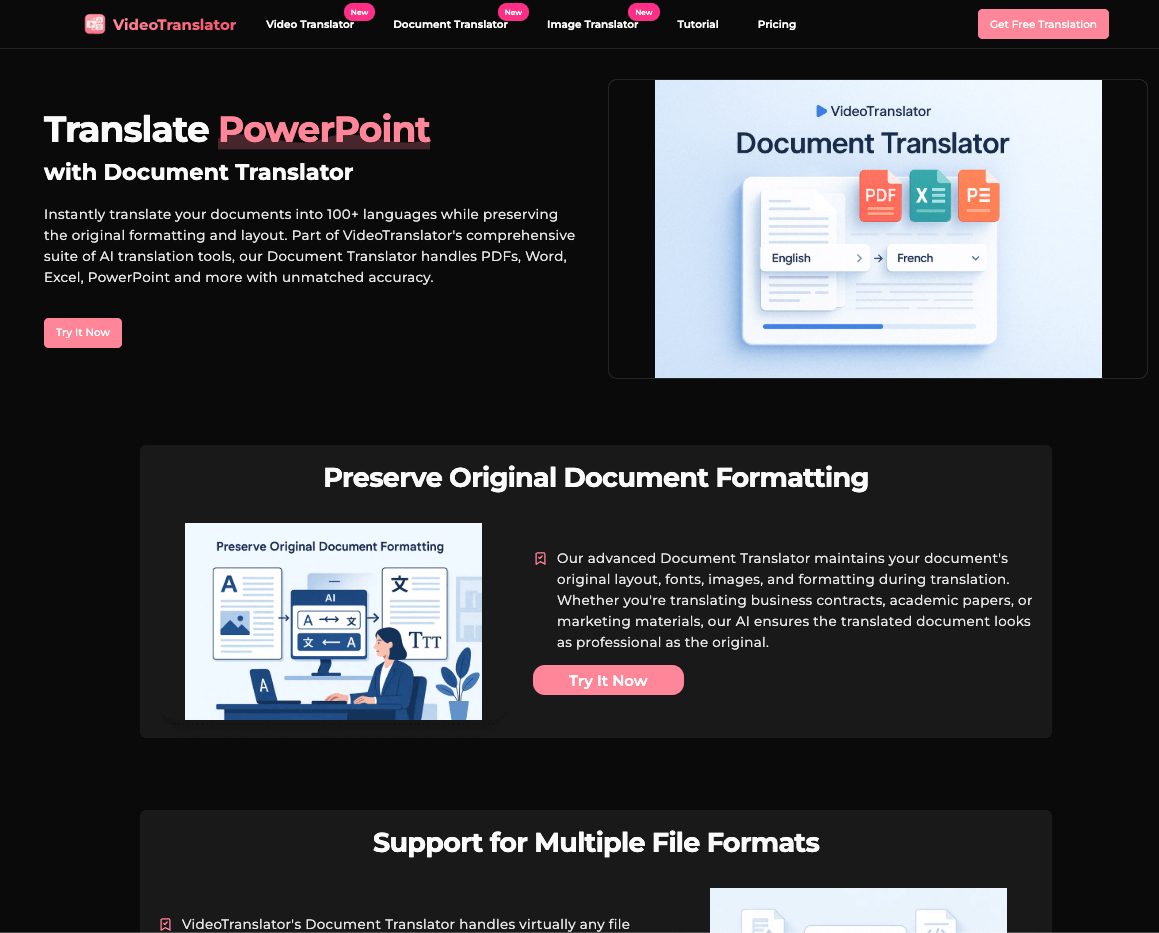
Our Document Translator provides efficient machine translation for your technical documents and files with excellent baseline quality.
Choose Generative AI Translation When:
- You're translating creative, marketing, or conversational content
- Maintaining brand voice and style consistency is essential
- Your content contains idioms, cultural references, or complex contexts
- You need translations that read naturally to native speakers
- You want to minimize or eliminate post-editing requirements
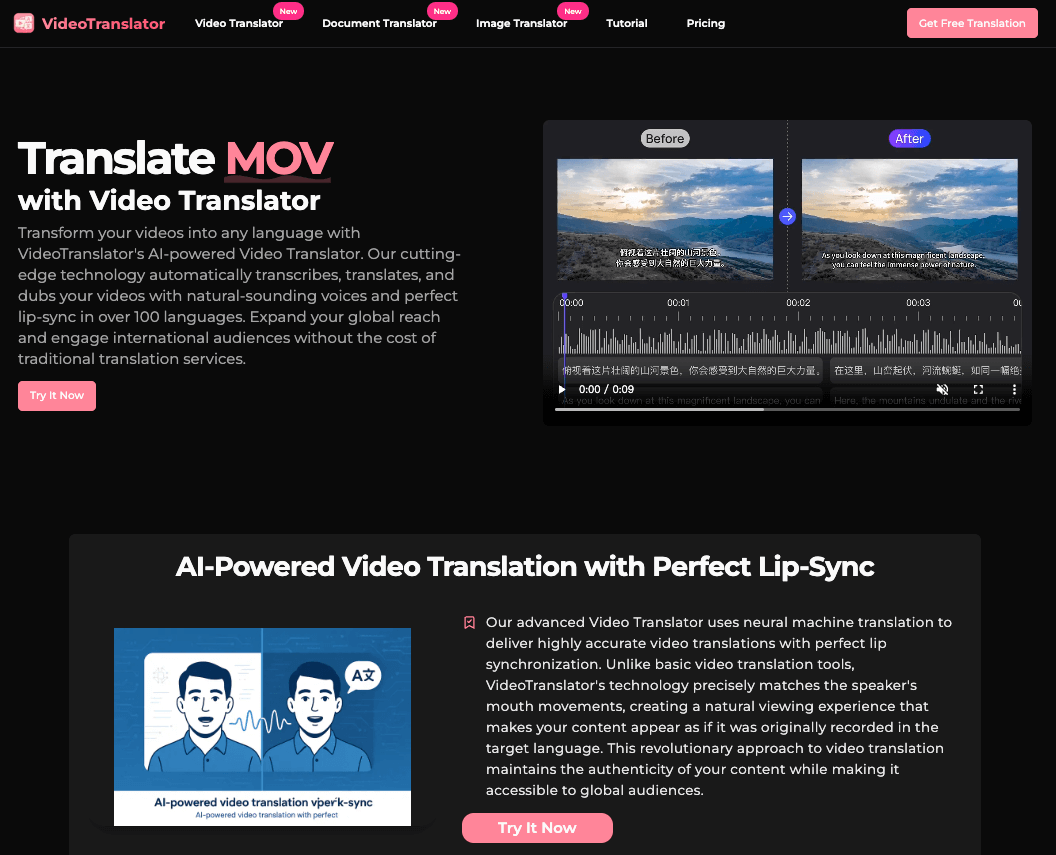
Our AI Video Translator leverages advanced generative AI to deliver natural-sounding translations with perfect lip-sync across 130+ languages.
Hybrid Approaches
For many organizations, the optimal solution combines both technologies:
- Use MT for technical documentation, internal communications, and high-volume content
- Deploy generative AI for customer-facing content, marketing materials, and creative projects
- Implement human review where quality is most critical
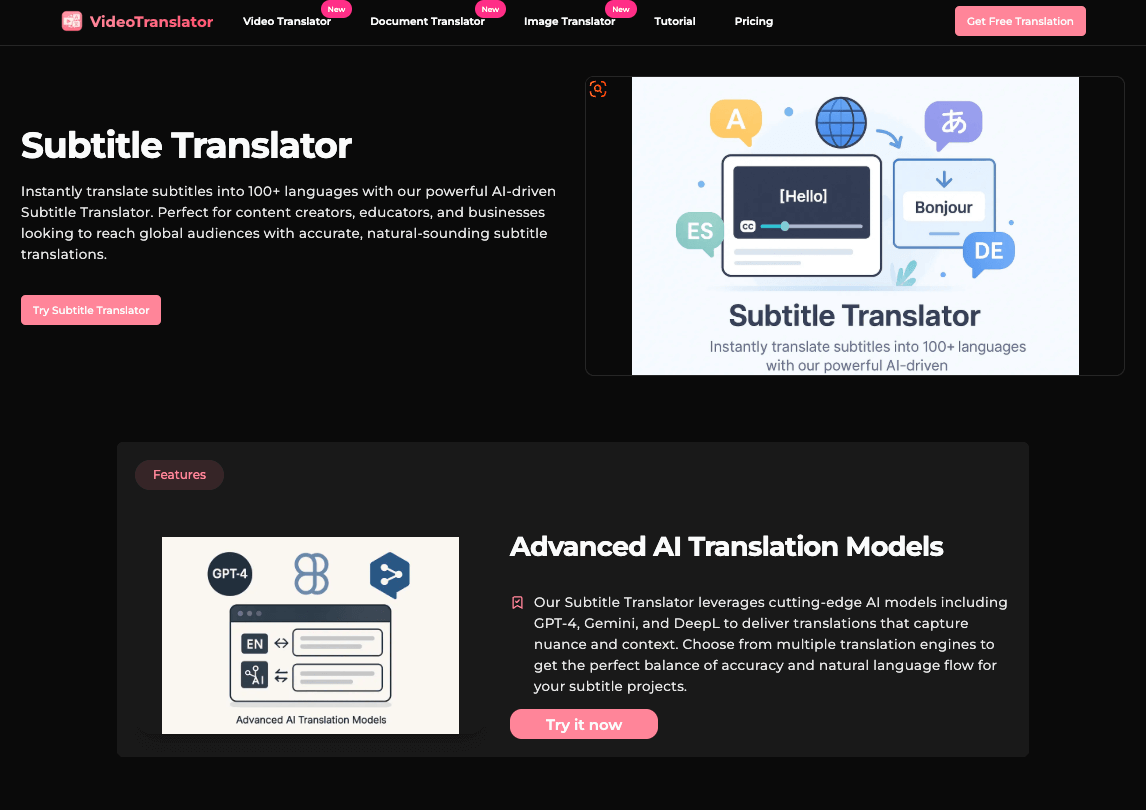
Try our Subtitle Translator which combines advanced translation technology with timing preservation for perfect subtitles every time.
Additional Translation Tools
For specialized translation needs, consider these powerful tools:
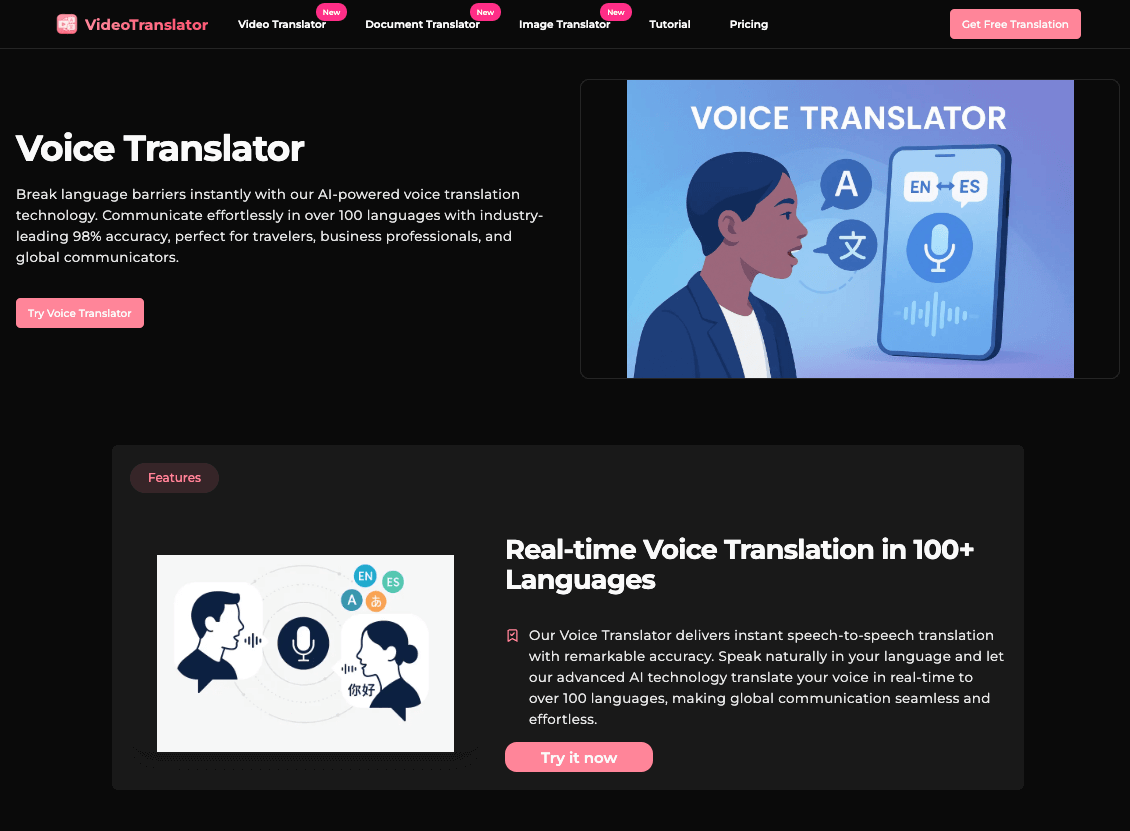
Our Voice Translator uses cutting-edge voice cloning technology to preserve the speaker's voice while translating into new languages.
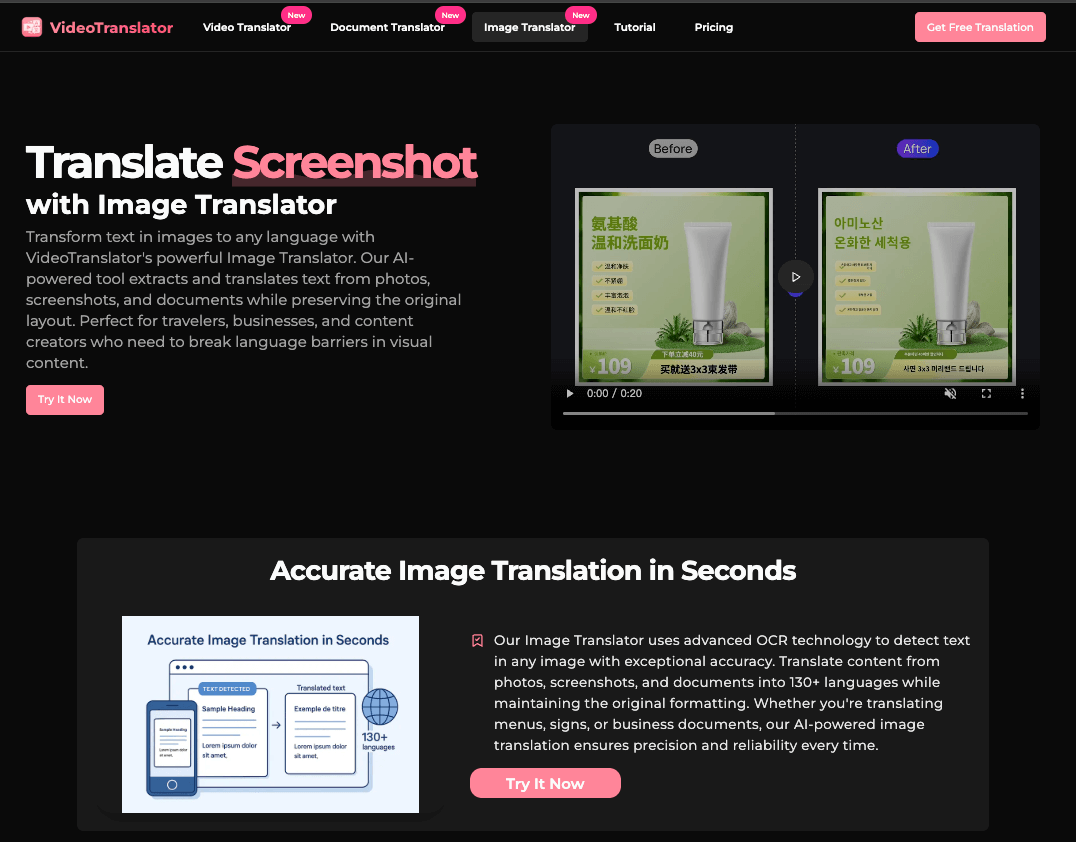
The Image Translator seamlessly translates text within images while maintaining the original design and layout.
Conclusion
The choice between machine translation and generative AI translation depends on your specific needs, content type, and quality expectations. While traditional MT remains valuable for high-volume, technical content with straightforward language, generative AI translation represents a significant leap forward in quality, context awareness, and natural output.
For organizations seeking to effectively communicate across language barriers, understanding these differences is crucial. By strategically deploying both technologies based on content requirements, businesses can optimize their translation processes for both efficiency and quality.
As translation technology continues to evolve, we recommend regularly evaluating your translation strategy to ensure you're leveraging the most appropriate tools for your specific needs. Whether you choose machine translation, generative AI, or a hybrid approach, selecting the right technology will help you communicate more effectively with global audiences while managing costs and maintaining quality standards.